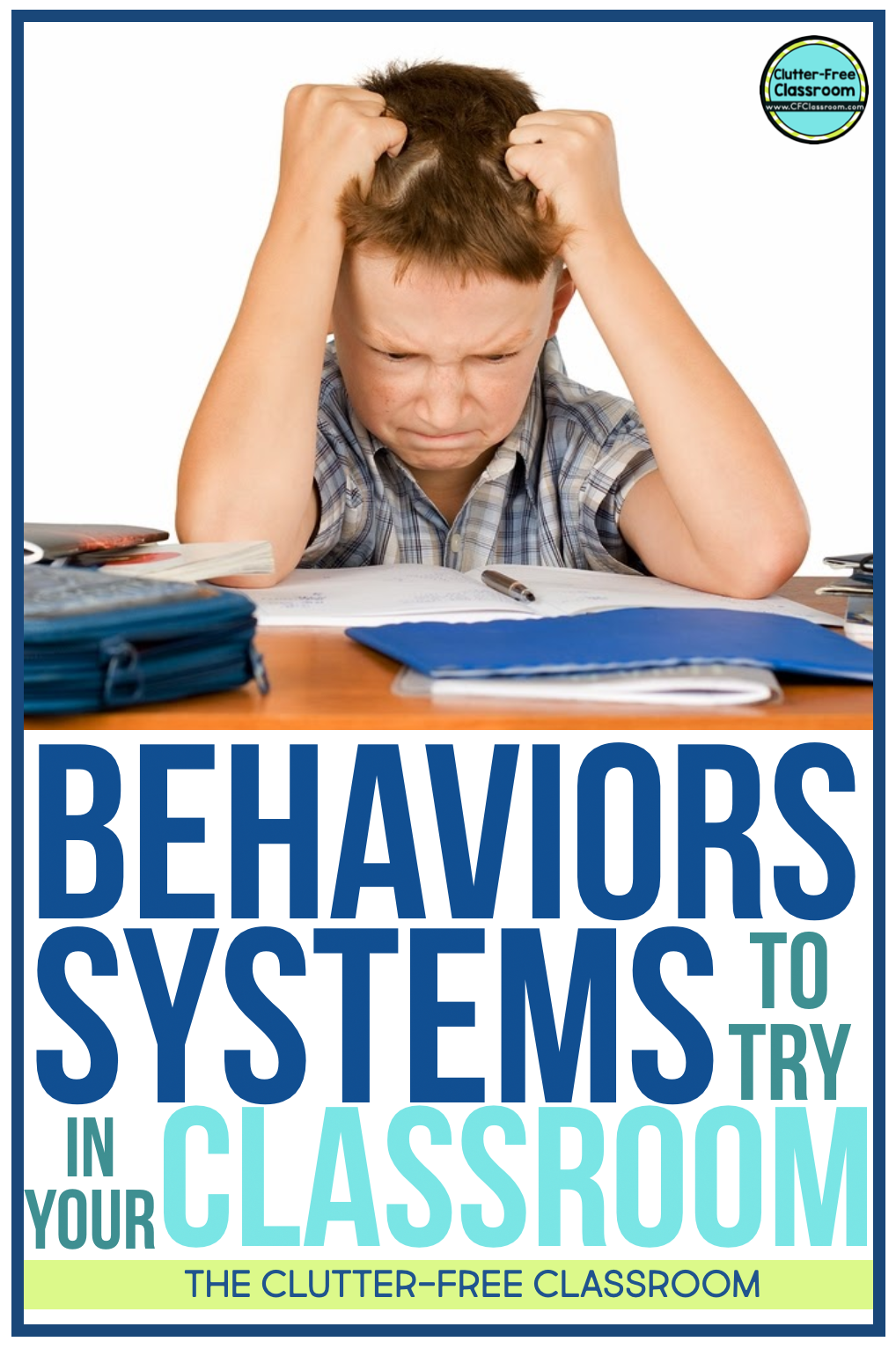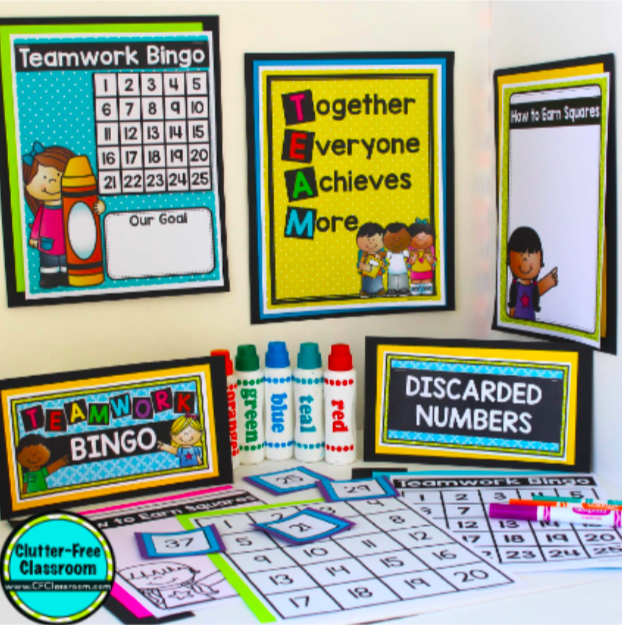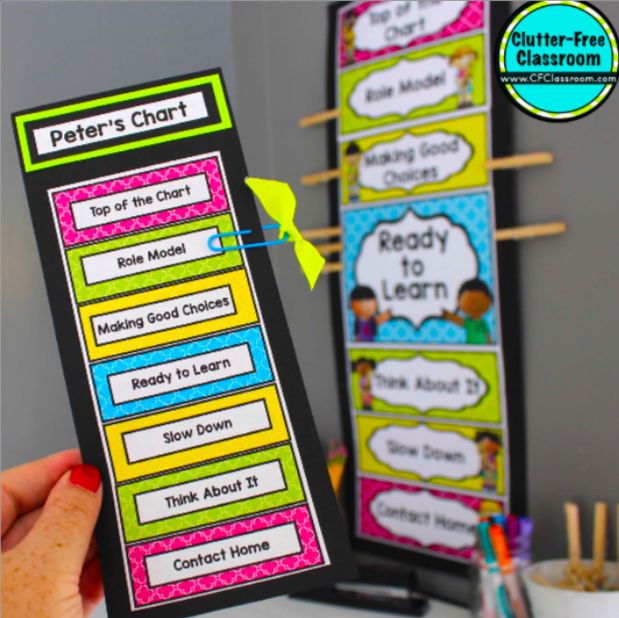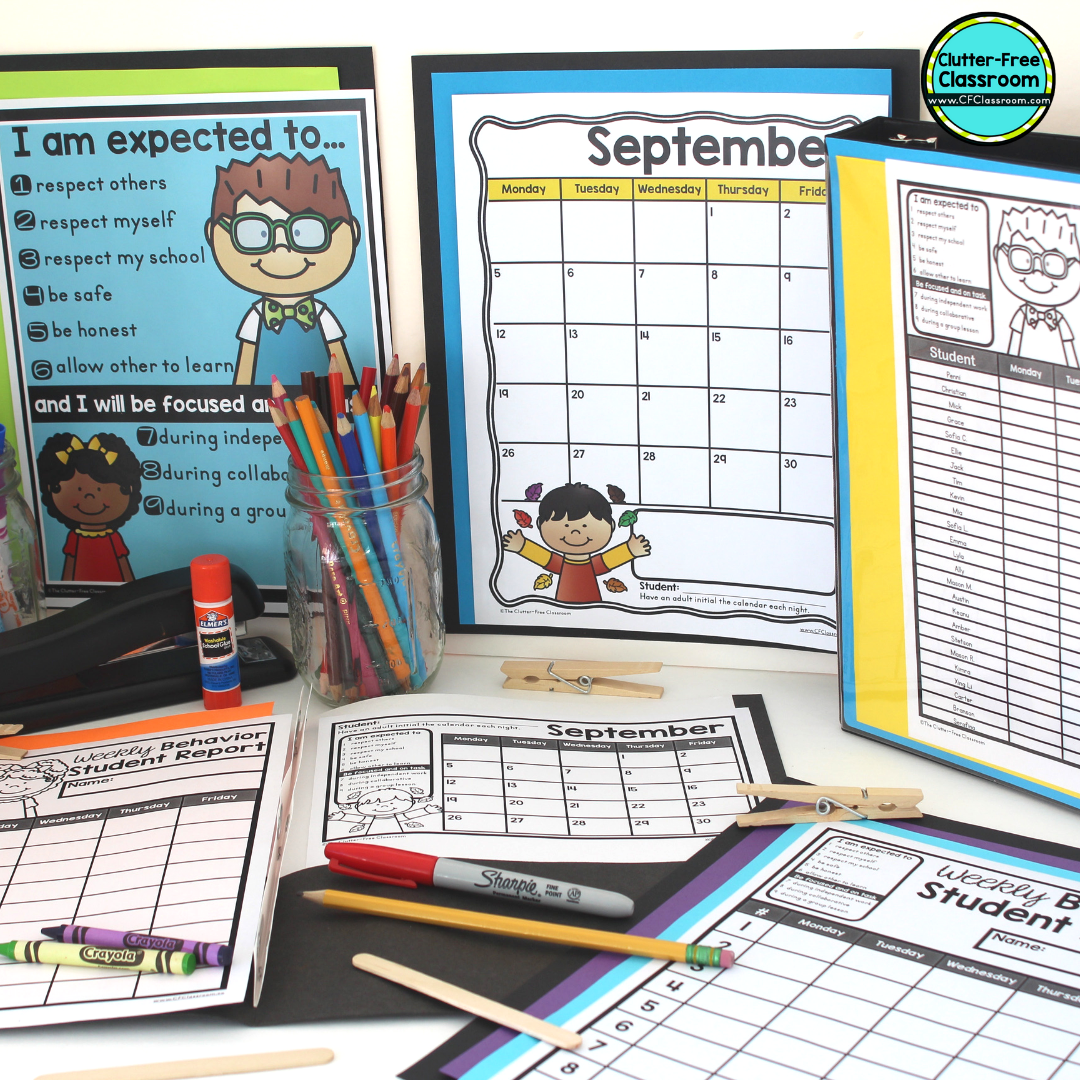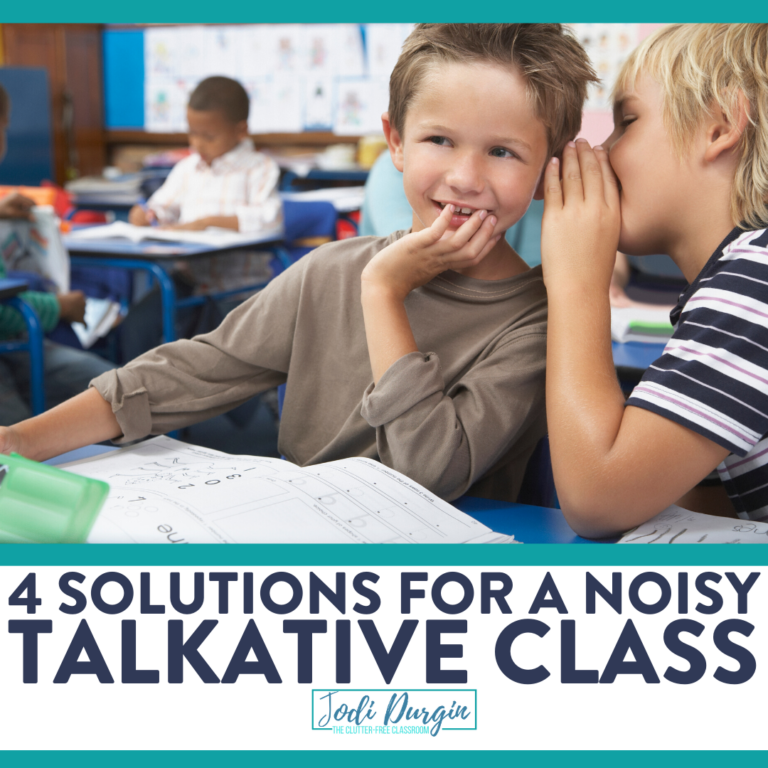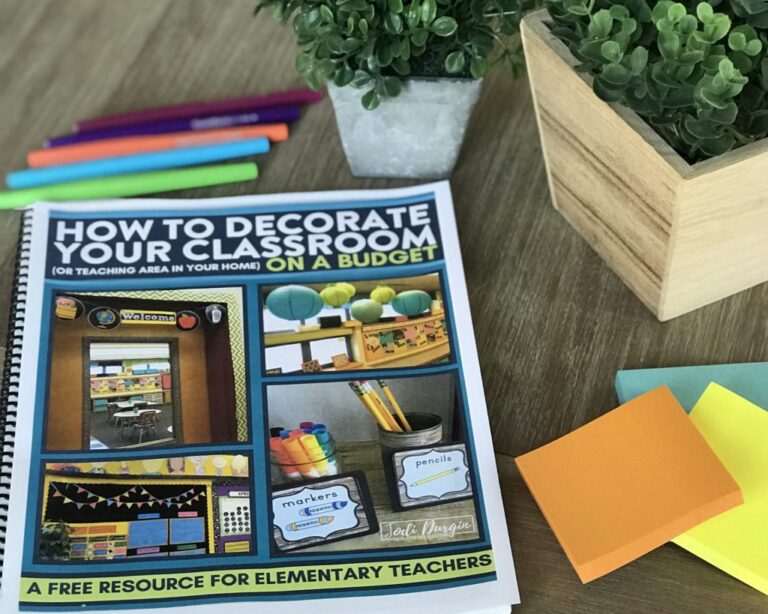Teachers use classroom behavior management systems to keep students on task and to create a safe classroom community where all children can learn. This post shares ideas and strategies teachers can use for group behavior systems as well as individual behavior plans. Read below to learn more!

5 Behavior Management Systems
Below are 5 classroom behavior management systems for the whole class.
Teamwork Bingo
The first classroom behavior management system on the list is teamwork bingo. Display a hundred chart in the classroom and place cards numbered 1-100 into a container. You can either identify specific ways to earn a number (i.e. everyone bringing in their homework or cleaning up and transitioning in less time than previously recorded) or make it spontaneous (getting a compliment from another teacher as they walk as a class down the hallway).
When students earn a number, the teacher asks a student to draw a number from the container and color that number in on the chart. When a predetermined number of squares in a row have been colored, the class earns a reward (wear slippers or pajamas for the day, an hour of free choice time, etc). If you want the class to earn a reward sooner, you may want to use a smaller chart such as numbers 1-25.
Class Chain
The second classroom behavior management system on this list is called teamwork chain (or class chain). Place a sign high on the wall reading, “Teamwork Chain” with a paper link attached. Precut strips of paper of the same length. Add a link to the chain when the class works as a team, follows procedures, etc. When the chain touches the floor, the class earns a reward.
Clip Charts
The third classroom behavior management system on this list is clip charts. When I first used a clip chart, I LOVED it. As time went on I began to have reservations and stopped using it for a few years. But, then I had “that” class. The class that made me use up everything in my bag of tricks in an attempt to manage some very challenging behaviors. Ultimately, I brought back the clip chart and guess what? It worked. It worked well. It worked so well that I used it again the next year.
The “clip chart” is a vertical display that is divided into sections. Each student’s name is written on a pinch-style clothespin and all students start the day in the middle of the chart. This section is often labeled, “ready to learn.” Their choices during the day determine what happens to their clip. Students exhibiting positive behaviors are told to “clip up.” They move their clip up to the next session in hopes of making it to the “top of the chart.” Students may also be asked to “clip down” based on the choices they are making in the classroom. Clipping down comes with consequences such as lost time from activities, parent contact etc.
The nice thing about the clip chart is that students have the ability to redirect their behaviors. I also like that students are acknowledged for being role models to their peers. Oftentimes, the class can easily be redirected simply by asking one student to clip up. For example, if most students are chatty and off task a teacher could announce, “I see that Molly has followed all the directions and is working quietly. Molly will you please ‘clip up.” The teacher’s positive interaction with Molly will result in the other students doing the same.
Download the classroom clip chart!
Team Points
While whole-group behavior plans cover the entire class, there may be times when you want to focus on modifying the behaviors of specific groups. These could include tables/clusters of desks, guided math groups, reading groups, etc.
Once a group has been formed (i.e. table 1, table 2 or the red group and the blue group) they should be encouraged to always work as a collaborative team. To encourage them to work together you may want to add additional incentives or consequences specific to their group and not part of the whole class system.
Team points work well for this purpose. List all the groups or teams on a dry erase board. Explain that each team can earn tally marks for exhibiting role model behavior. They may also lose points if they are being disruptive or demonstrating off-task behaviors. Set a predetermined amount of time such as Monday through Friday or arrival through dismissal. Reset the team points to zero at the start of the time frame. At the end of the time frame, the team with the most points earns a reward.
This can be extremely motivating. You may use it proactively to say the first table cleaned up and ready for math will earn a team point. Stress the importance of teamwork and helping one another. Explain that if they are blaming a teammate for not being ready they will lose a point. Instead, they should be using positive language and helping each other.
When working in small guided groups for teacher-directed instruction you can end each session by adding a sticker or coloring a square on a chart. When the chart is completed the group earns a reward.
Behavior Calendar
Some teachers prefer and some schools require teachers to implement a behavior plan that is individualized and discrete. I created a system that met both of those goals and streamlined the process of communicating a child’s behavior to their family daily. I made a daily calendar behavior log with numbers that directly related to my expectations. Each student had a monthly calendar in his daily communication folder.
If a child was not “meeting a classroom expectation,” I quietly addressed it by verbally reminding him of the expectation that he was not following. For example, “You are expected to be on task during independent work time.” I then record the #7 on my whole-class chart. If the behavior continues I state, “I reminded you that the expectation is to be on task during independent work. Let’s add it to your calendar as a goal to work on.” I then circle the #7 on my chart which signifies that I will be recording it on his calendar.
If the same behavior continues throughout the day, I add tally marks next to the number. This shows the parent what the child’s day looked like. In the event that a child exhibits repeated behaviors or demonstrates a behavior that is dangerous, destructive or considered to be “bully-like” they complete a goal sheet. The goal sheet communicates more about the incident to the family and, most importantly, it is in the child’s words. This helps to eliminate the phone calls and emails that say “I want to hear his side of the story” or “__ says she didn’t do anything wrong.” It also helps to remind the child that we must all take ownership for our actions, but that we can all make positive choices.
In closing, we hope you found these classroom behavior management systems helpful! If you did, then you may also be interested in these other posts:
- Simple Ideas for Managing Student Behavior
- Classroom Management Strategies for Elementary Teachers
- How to Create a Classroom Calming Corner
